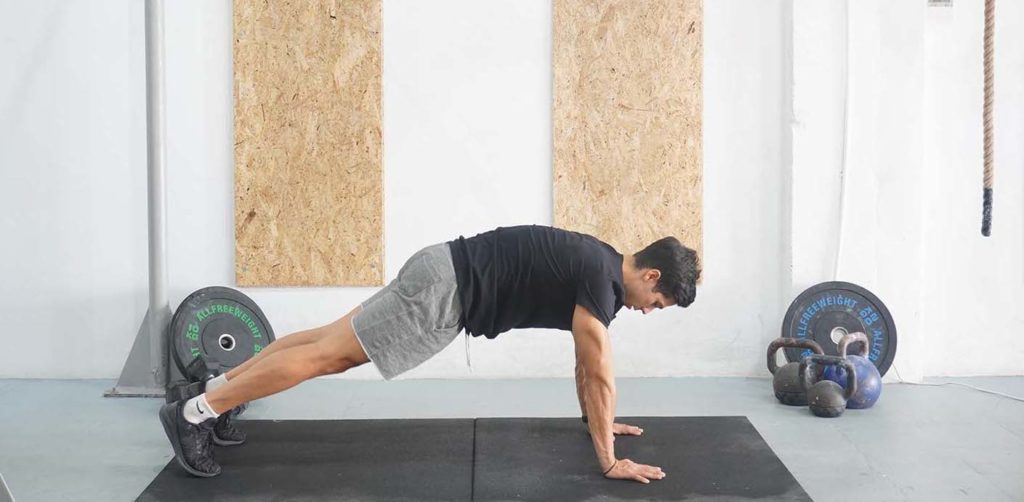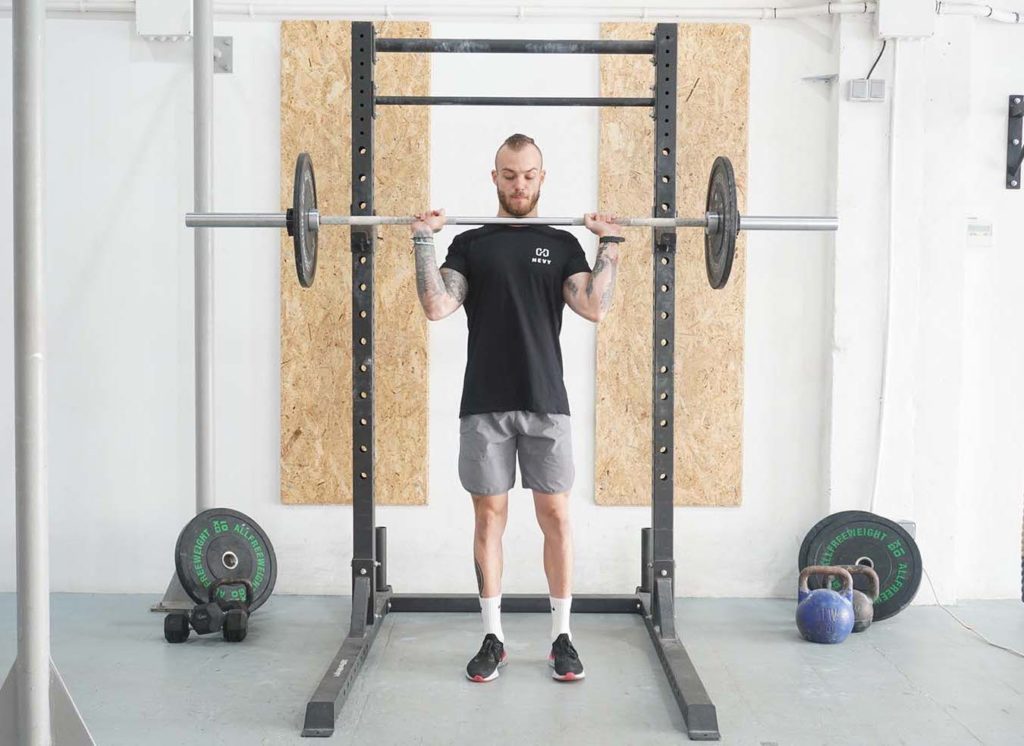Mastering the Kettlebell Turkish Get Up
The Turkish get up is a functional and challenging exercise that builds core strength and whole-body stability. More importantly, Turkish get ups are an activity that develops a solid movement foundation and strengthens your core for many other activities.
A notable advantage of Turkish get ups is that the exercise will keep you honest and stop you from training your ego. Any core weakness, lack of mobility, or other limitation will quickly translate to an inability to perform the get up, forcing you to go back to the drawing board and figure out what’s wrong.
But, despite the difficulty, learning the kettlebell Turkish get up will make you functional, athletic, and less likely to get injured. As a result, your sports and gym performance will improve, and you will be able to tackle everyday tasks with ease.
We recommend practicing the Turkish get up early in your kettlebell training. Start with a light load to get used to the movement pattern and increase the resistance as you develop strength and stability.
Level of the exercise: Advanced
How to do a Kettlebell Turkish Get Up
_Thighs_small.jpg)
- Lie on the floor with your right knee bent and your right foot flat on the ground. Have your left leg straight for the starting position.
- Hold a kettlebell in your right hand and keep your wrist, elbow, and shoulder in vertical alignment.
- Move your left arm to the side with the hand flat on the floor for balance.
- Engage your abs, take a breath, and raise your torso off the floor, making sure to keep your right arm straight and the kettlebell over your shoulder joint. Push yourself with your left arm until your torso is vertical and you’re in a seated position.
- With the kettlebell still over your right shoulder and left hand supporting you, bend your left leg and place the knee on the floor, raising yourself.
- Keep your back straight as you raise your torso higher and remove your left hand from the floor.
- Square your hips to create a solid lunge position, take another breath, and lift your left knee, stepping on the left foot. As you do that, get up to the standing position by extending your knees and hips. Keep the kettlebell over your shoulder, and don’t bend your elbow.
- Reverse the motion by lunging back, lifting your left foot off the floor, landing on your left knee, and rotating the left leg behind your body.
- From there, place your left hand on the floor, extend your left leg in front of you, and get into the seated position without extending the right knee. Maintain the kettlebell over your right shoulder.
- Bend your left arm to lower your torso further and lie on your back carefully and into the starting position without bending your right arm.
What muscles do kettlebell Turkish get ups activate?
Unlike many full-body exercises, Turkish get ups aren’t as dynamic, but they force a range of major muscles to flex isometrically and keep us in position. The shoulders, triceps, chest, serratus anterior, and upper back are some muscles that work during Turkish get ups. Their primary functions are to flex isometrically, maintain torso rigidity and help us support the weight in position. For example, your tricep and shoulder work hard to keep you stable as you support yourself on your left hand.
Our entire core also plays a significant role in the Turkish get up. The rectus abdominis, transverse abdominis, obliques, erector spinae, glutes, and pelvic floor muscles flex isometrically to provide torso rigidity. Our abs, obliques, and glutes also have an active role as they help us stand up from a lying position.
The quadriceps, hamstrings, adductors, and calves have a similar function to the upper body. These muscles provide stability and allow us to assume the correct position to stand up from the half-kneeling pose.
Progression into the Kettlebell Turkish Get Up
As mentioned in the introduction, kettlebell Turkish get ups are an advanced exercise. Because of that, we recommend you take the time to develop a base of core strength and stability before learning the get up. Fantastic movements you should do include the bench press, dips, shoulder press, barbell row, pull-up, plank, glute-ham raise, hip thrust, and squat.

Once you feel confident that you have a solid base for Turkish get ups, begin practicing the movement pattern without any weight. Follow the steps outlined above but don’t hold a kettlebell. Doing so will familiarize you with the movement without making the get up impossible or overwhelming.
You can then transition to half get ups. The objective is to start from the floor and go up until your torso is vertical and you’re supporting yourself on your left arm. From there, lower yourself back to the floor and repeat. Doing so is a great way to practice the first part of the Turkish get up and further develop your upper body strength.
You can later start practicing the second half of the Turkish get up, doing reps slowly, and holding a light kettlebell.
Variations and Modifications of the Kettlebell Turkish Get Up
1. Half Turkish Get Ups
As briefly mentioned in the previous point, the half Turkish get up is a beginner-friendly variation you can use as part of your progression. Instead of going all the way up, you elevate yourself until your torso is vertical before returning to the floor.
2. Overhead Squat Turkish Get Ups
The variation is similar to the classic get up, aside from a few tweaks in the technique that allow you to finish the execution with an overhead squat. You then have to descend by squatting down before moving to one knee.
3. ‘Hands-Free’ Turkish Get Ups
The hands-free Turkish get up is a fun and incredibly challenging variation for the more advanced trainee. You have to begin from the floor but avoid supporting yourself with your left arm. Doing so forces your core muscles to work extra hard and produce more force.
Mistakes to Avoid
Forgetting An Important Principle
One of the most common mistakes is a general principle people get wrong. The principle suggests that you should never move to the next stage of the movement before you have a solid foundation. For example, never raise your leg and support yourself on the left knee before your free hand is flat on the floor with the elbow extended.
Losing Whole-Body Tightness
Another common mistake with the Turkish get up is failing to maintain whole-body rigidity from start to finish. Often, trainees focus too much on individual steps that they forget to keep their entire body tense. Doing so makes the get up more challenging and can prevent you from completing the sequence.
Arching Your Lower Back
Excessive lower back arching during a Turkish get up is another of the common mistakes. Many trainees make the mistake unknowingly but doing so places unnecessary stress on the spine. Instead, you should engage your abs before each repetition. Doing so will put your spine in a neutral position, making it easier to stay rigid during the execution.
Similar Exercises to the Kettlebell Turkish Get Up
Standing Military Press (Barbell)

The standing military press differs from the Turkish get up, but the exercise strengthens your core, upper back, shoulders, chest, and triceps (1). These muscles play an essential role in keeping you stable and supporting the dumbbell during a get up.
Lunge (Dumbbell)
Like the military press, lunges are a fantastic exercise that strengthens a range of muscles you’re using during a Turkish get up. Lunges develop your quadriceps, adductors, hamstrings, glutes, and midsection (2).

